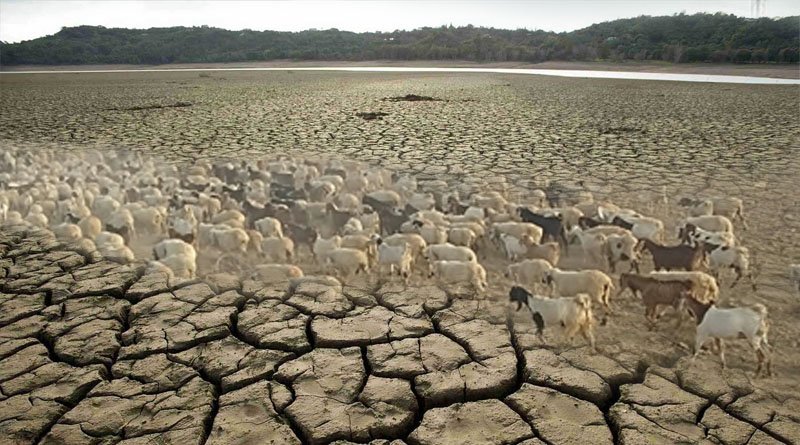“Balochistan has incredible potential to become the largest livestock entrepreneur sector due to the increasing demand for halal food in Muslim countries,” said Dr. Afzal.

Livestock sector of Balochistan has emerged as one of the province’s major economic pillars, contributing more than 50% of the province’s agriculture GDP and 10% of the overall provincial GDP.
When many countries compete for “halal food,” promoting livestock sector of Balochistan can be a significant contributor to our exports and foreign exchange earnings.
Using this resource and adding value to it through various incentives can provide better earning opportunities for locals while also generating revenue to help us control our trade and current account deficits.
“Balochistan has incredible potential to become the largest livestock entrepreneur sector due to the increasing demand for halal food in Muslim countries,” said Dr. Afzal, a livestock expert at the Food and Agriculture Organization (FAO).
“I suggested to the provincial authorities that this sector be focused on meat exports to Muslim countries,” he said. “Government promotion of meat exports will boost the provincial economy and create job opportunities in Balochistan.”
Because the Balochistan livestock sector has faced challenges such as a lack of water and fodder, inaccessible veterinary services, inadequate grazing pastures, and improper marketing, Dr. Afzal emphasised a comprehensive approach to promoting this sector.
“Long-term policies, genetic improvement, diversified and open marketing systems, credit and insurance, sustainable rangeland productivity, and proper vaccination drives were, in my opinion, desperately needed to improve livestock productivity and exports,” he said.
Livestock is one of the core assets and the main source of livelihood for rural households in Balochistan, with around 70 percent of its population directly or indirectly associated with this sector.
Balochistan has 5,660,707 cattle, 1,199,277 buffaloes, 16,436,976 sheep, 16,880,371 goats, 467,487 camels, 108,129 horses, 25,964 mules, 657,791 asses, and 8,467,330 poultry, according to the projected livestock population.
According to official statistics, this sector contributes approximately Rs. 20 billion to the provincial economy, with meat accounting for 40%, milk 35%, eggs 13%, skin, hides, and wool accounting for 10%, and other items accounting for 2%.
“Because the Balochistan government recognises the livestock sector’s potential and its contribution to the province’s socioeconomic development,” said Dr. Ghulam Rasool Taj, Director General Animal Health and Production Extension.
He hoped that as a result of this system, the livestock sector, its actors, and value chains would step forward to transform it into a modern, revenue-generating sector.
“This system will serve as a springboard for disseminating information and ensuring the well-being of the entire livestock sector,” Ghulam Rasool said. “I am confident that the information system will effectively educate existing livestock keepers while also attracting more to this business.”
Despite ecological constraints and being an arid and semi-arid province, livestock contributes 55% of agriculture’s value added, 11.4% of the national GDP, and more than 47% of Balochistan’s economy.
Rangelands cover approximately 93% of the province, with 28% considered fair to good for livestock production. As a result, with the exception of some portions of the upper and lower highlands in the province’s north-eastern highlands, which have the best ranges and support 76% of the livestock population, the southern plains have the poorest ranges and support only 24% of the livestock population.
Some of the land surface area does not even support livestock rearing all year, necessitating the seasonal migration of nomadic and semi-nomadic grazers in search of fodder for their cattle, primarily sheep and goats.
It is worth noting that the first veterinary unit in Balochistan was established in Tehsil Duki during the British regime in 1884. Following the introduction of the five-year plan for promoting poultry, sheep, goats, and cattle farms, Disease diagnostic facilities and animal health coverage were started on a mass scale, and the number of livestock increased rapidly in 1958.
“Balochistan Livestock Policy and Strategy 2020-30” was launched in October 2019. During 1982-85, 1000 Friesian Cows were imported from Denmark for increasing Milk Production in the area through ADB Loan.
The primary objective of agriculture policy in Balochistan is to raise incomes and employment for rural people, at the same time halting and reversing the rapid resource degradation taking place.
“We need authorities to be proactive during epidemics and seasonal diseases,” said Altaf Gujar, President of the Balochistan Dairy Farm Association. “Delay in medication can jeopardise industry growth, as seen during the recent outbreak of lumpy skin disease, which killed thousands of animals.”
“If authorities fully concentrate, massive revenue can be generated from cattle farming,” he stated, suggesting that this industry be incentivized to improve production and meet future meat and milk needs.
